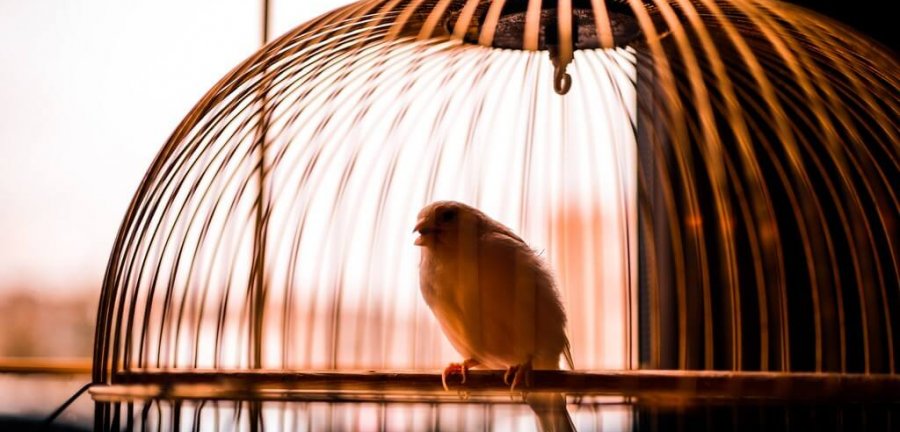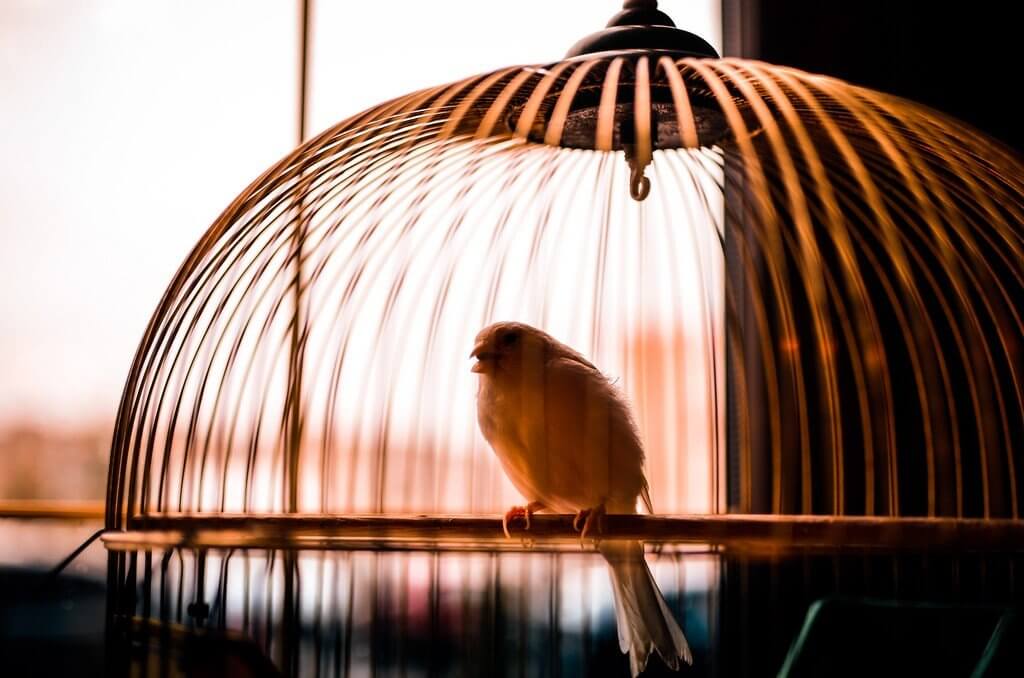You can’t pitch woo without (vegan) dark chocolates and a nice merlot—unless you’re a songbird. Then, you—well, sing, and not just some two-note ditty.
Many studies of free-living birds have established that those who aren’t skilled in the singing arts may not get the girl.
For birds who are confined to cages, though, it doesn’t matter how beautifully they can sing—they’re doomed to a lonely life behind bars. Like many captive animals, they may even scream and cry out because they’re so distressed and isolated.
There’s no such animal as a “cage bird”—birds were either captured in the wild or bred in captivity. They’re never alone in their natural habitats, and if they become separated from the rest of the flock for even a moment, they’ll call wildly to their mates. They preen one another, fly and play together, and share the responsibility of incubating their eggs.
But life is anything but natural for many of the approximately 10 million birds who are stuck inside cages across the United States.
Denied the companionship and mental stimulation that these social, intelligent beings need, both captured and captive-bred birds often become depressed, aggressive, and anxious, pacing incessantly, pecking repeatedly at cage bars, pulling out their feathers, and mutilating themselves, sometimes to the point of death.
And when they do exhibit normal bird behavior—flock-calling, throwing food, biting, chewing on objects—their guardians, frustrated and unprepared for an animal companion who can be as curious, needy, and demanding as a toddler, may abandon or isolate them in a corner of the living room or basement, which only adds to the misery of these highly social animals.
No bird was born to be in a cage. Like dogs on chains, caged birds crave freedom and companionship, not solitary confinement for the rest of their lives.








